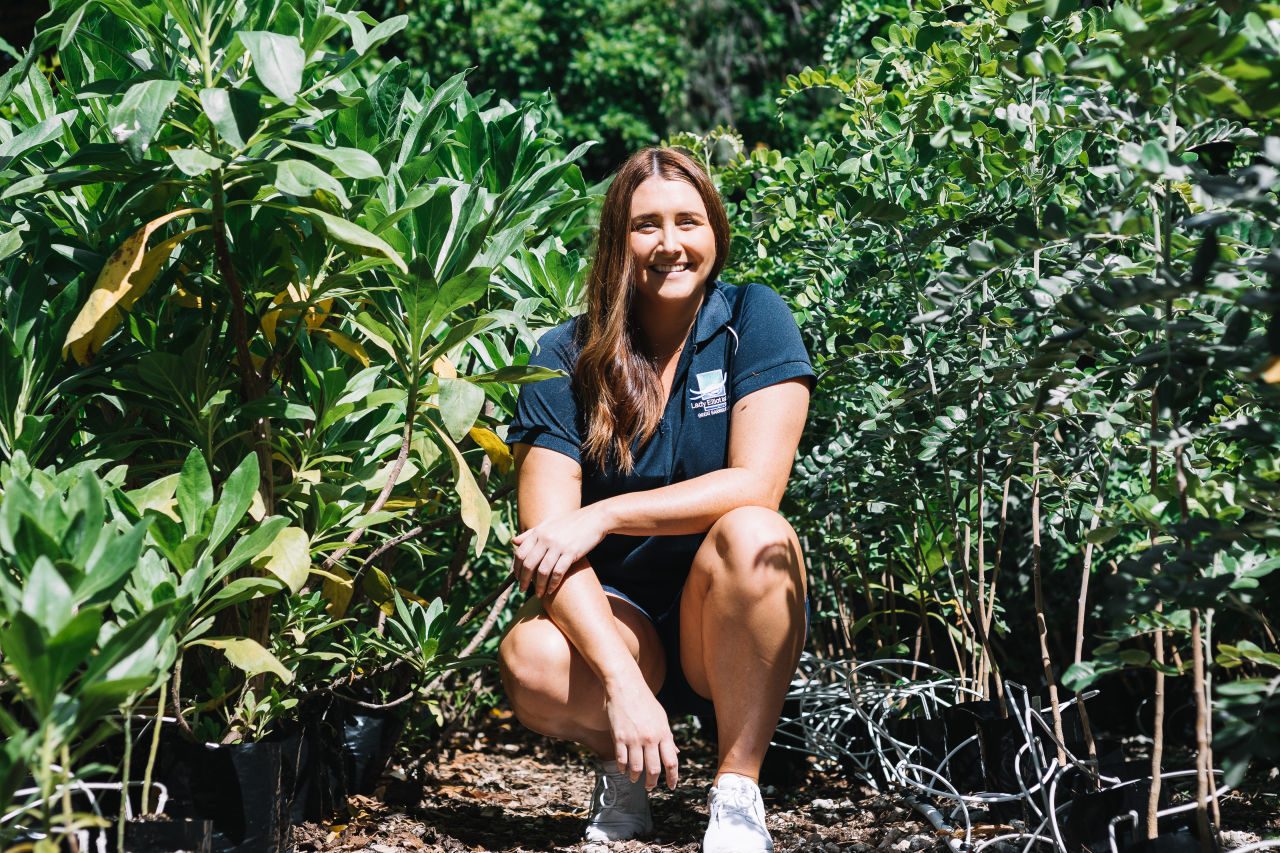People of the Reef ·
Amy Gash: ‘Our Reef is teeming with the most incredible wildlife’
As a custodian of Lady Elliot Island, Amy has the pleasure of spending much of her time surrounded by turtles, manta rays, dolphins, countless species of fish and thousands upon thousands of sea birds. Take a sneak peek into a day in her life on a remote island in the Great Barrier Reef.
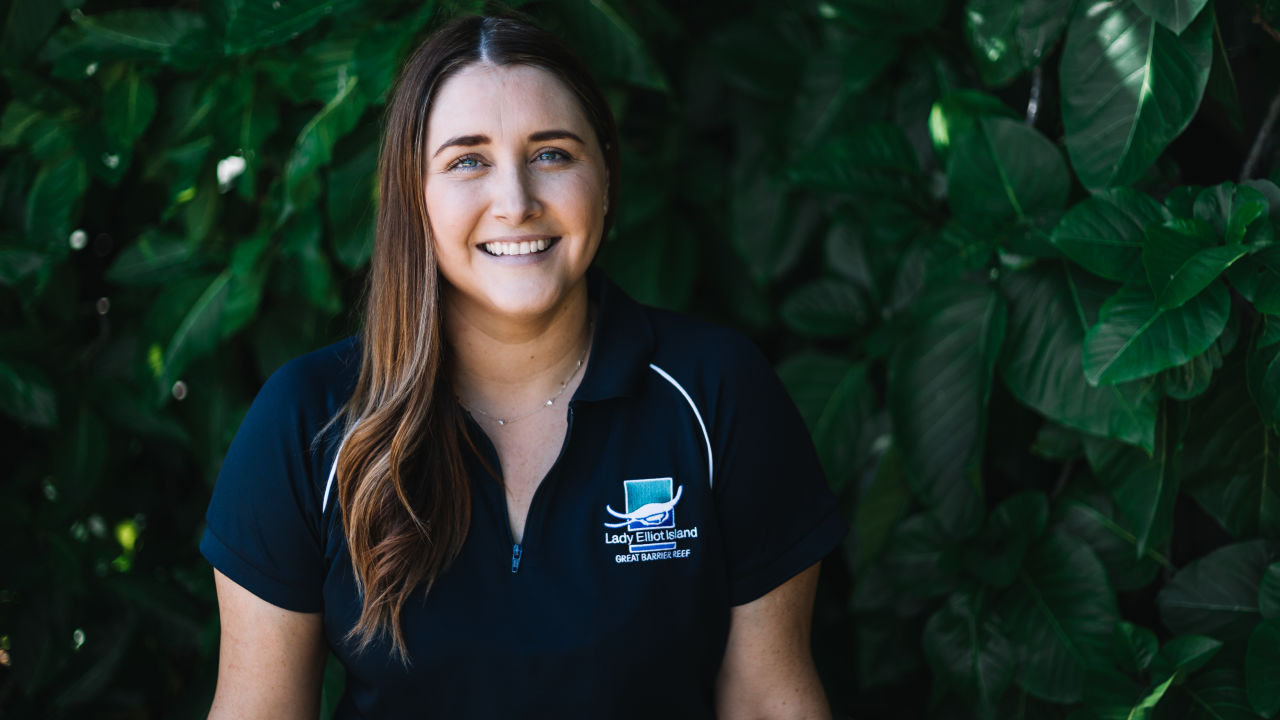
You’re on a small tropical island teeming with wildlife. All around you, iridescent blues of the ocean glimmer alongside emerald-green vegetation and a white crushed coral beach. You’re sitting beneath a heritage-listed lighthouse, sipping on a cold drink and watching a fiery sun dropping below the horizon, orange and pastel skies filling with thousands of birds returning home after a day at sea. The waves are crashing on the shoreline and sea-soaked snorkellers are returning from a day exploring the surrounding reef.
It might sound like a blissful guided meditation, but this is a typical late afternoon for Amy Gash, island custodian on the Great Barrier Reef’s Lady Elliot Island.
“Sunset drinks is a daily fixture on the island and it’s one of my most treasured moments of the day,” she says. “All these things are what makes the Great Barrier Reef so special to me.”
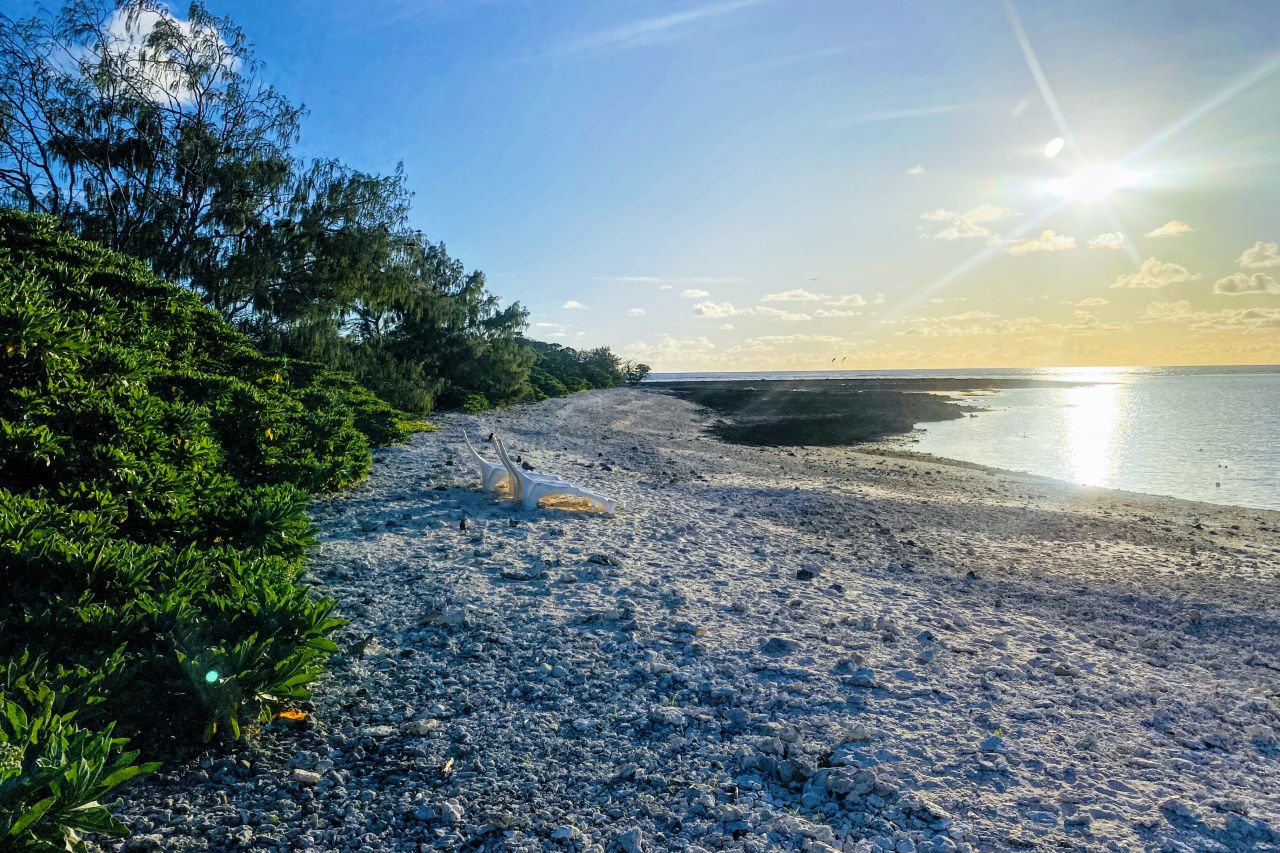
Amy was born into a life on the Reef, and a dedication to the tourism industry that helps support it. Her parents Peter and Julie Gash own Seair Pacific, an Air Charter Service that flies across Queensland, including to and from Lady Elliot Island. They’re also the leaseholders on the island, which sits 80km off the coast of Bundaberg on the southern tip of the Great Barrier Reef.
Lady Elliott Island is a coral cay about the size of 50 football fields. It’s a sanctuary for over 1,200 species of marine life including whales, manta rays, turtles, dolphins and corals. The island also has the second highest diversity of breeding seabirds of any island on the Great Barrier Reef.
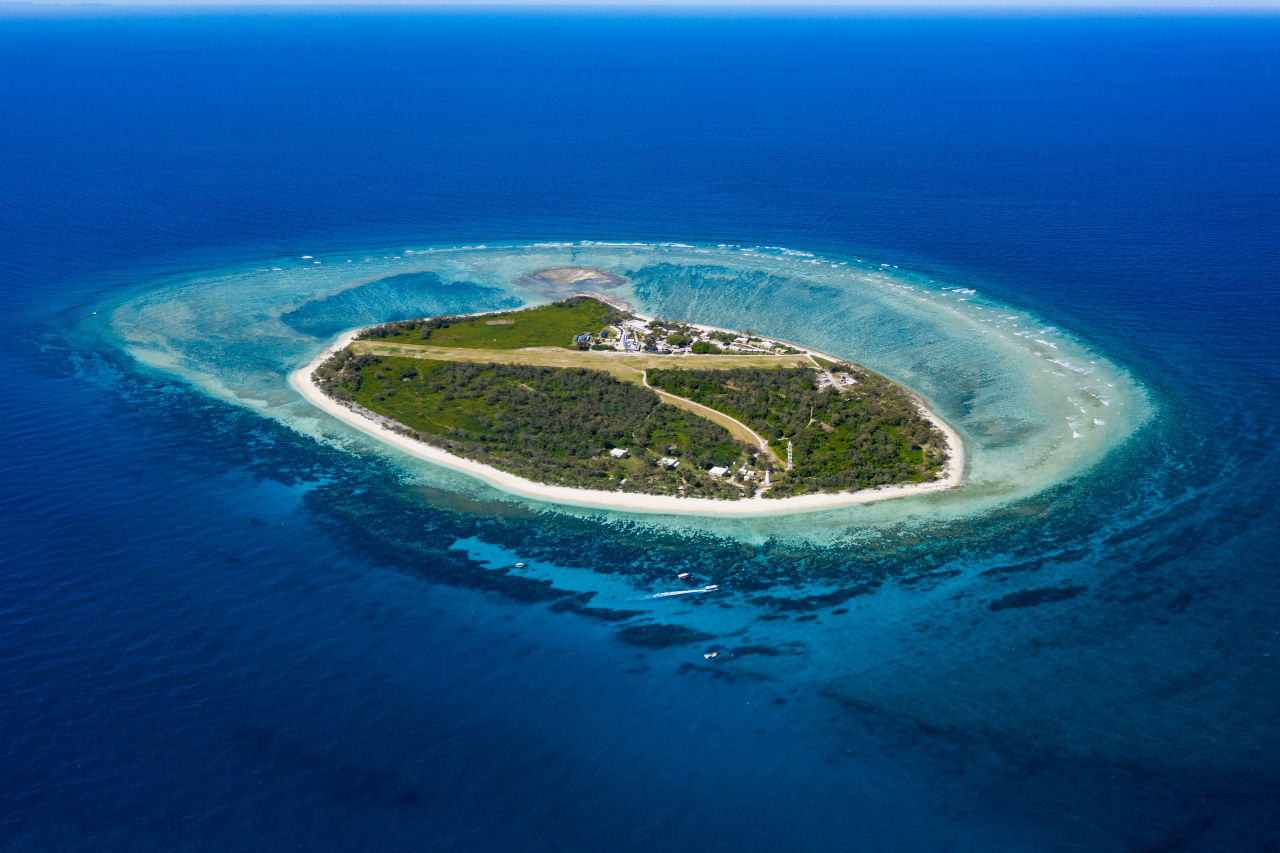
Lady Elliot provides shelter, breeding and feeding grounds for an incredible range of species. Supplied: Amy Gash
As leaseholders, the Gash family are custodians, responsible for protecting and preserving the site through revegetation programs and conservation efforts. They also manage the island’s eco resort.
“I was raised on the Gold Coast, but for as long as I can remember my life has revolved around the Great Barrier Reef and I’ve been lucky enough to grow up exploring one of the most pristine parts of it,” Amy says.
“I first visited the Reef when I was five years old when we were flying guests to Lady Musgrave Island. It was in 1997 when my family first became involved with Lady Elliot Island, providing aircraft services to the previous leaseholder. This meant that we began spending more time on the southern Great Barrier Reef and it was in 2005 when our family and several partners became the current custodians of the beautiful Lady Elliot Island. During my childhood years I would refer to Lady Elliot as my second home and I have many wonderful memories with family and friends on the Reef.”
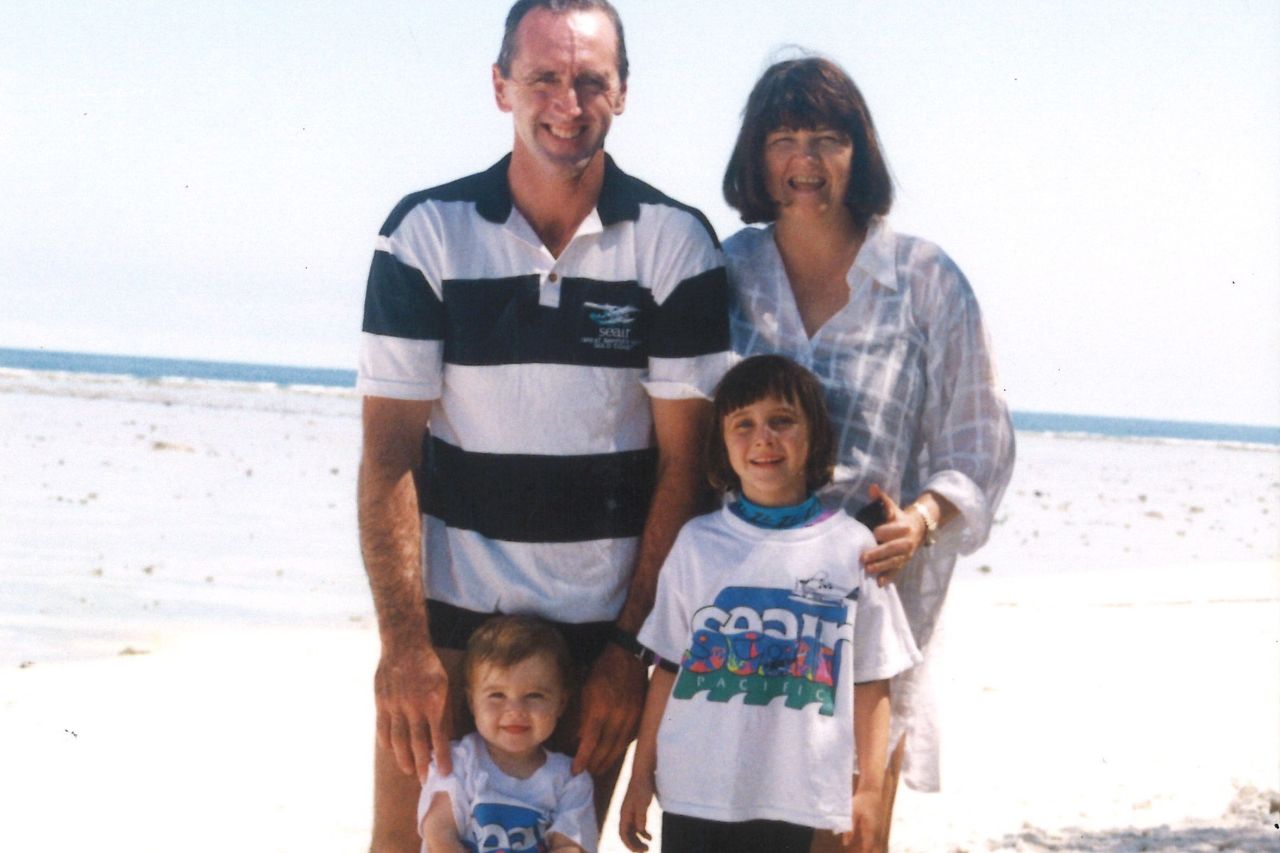
Peter, Julie, Chloe and Amy Gash on Lady Elliot Island in 1998. Supplied: Amy Gash
Snorkelling, diving and exploring the southern Great Barrier Reef inspired Amy’s love for wildlife, the ocean and nature.
“One of the fondest memories I have is walking the beaches at night with my family looking for turtles laying their eggs,” she says.
“Lady Elliot Island is a coral cay and a significant nesting site to endangered green and loggerhead turtles. In season, hundreds of turtles come ashore to lay their eggs. If we were lucky, we’d come across a mother turtle digging her nest. We would all huddle up behind her waiting patiently as she spent the next three to four hours digging.
"Occasionally we’d drift off to sleep until dad would excitedly wake us up, saying the turtle had finished digging her egg chamber and was about to lay. We’d watch as 100 to 150 ping pong-sized eggs would drop into the nest. She’d quickly lay her clutch and begin covering her nest, ensuring her last motherly effort is protection from any external predators. Finally, we’d watch her return to the water and as a family we would stagger back to our cabin.”
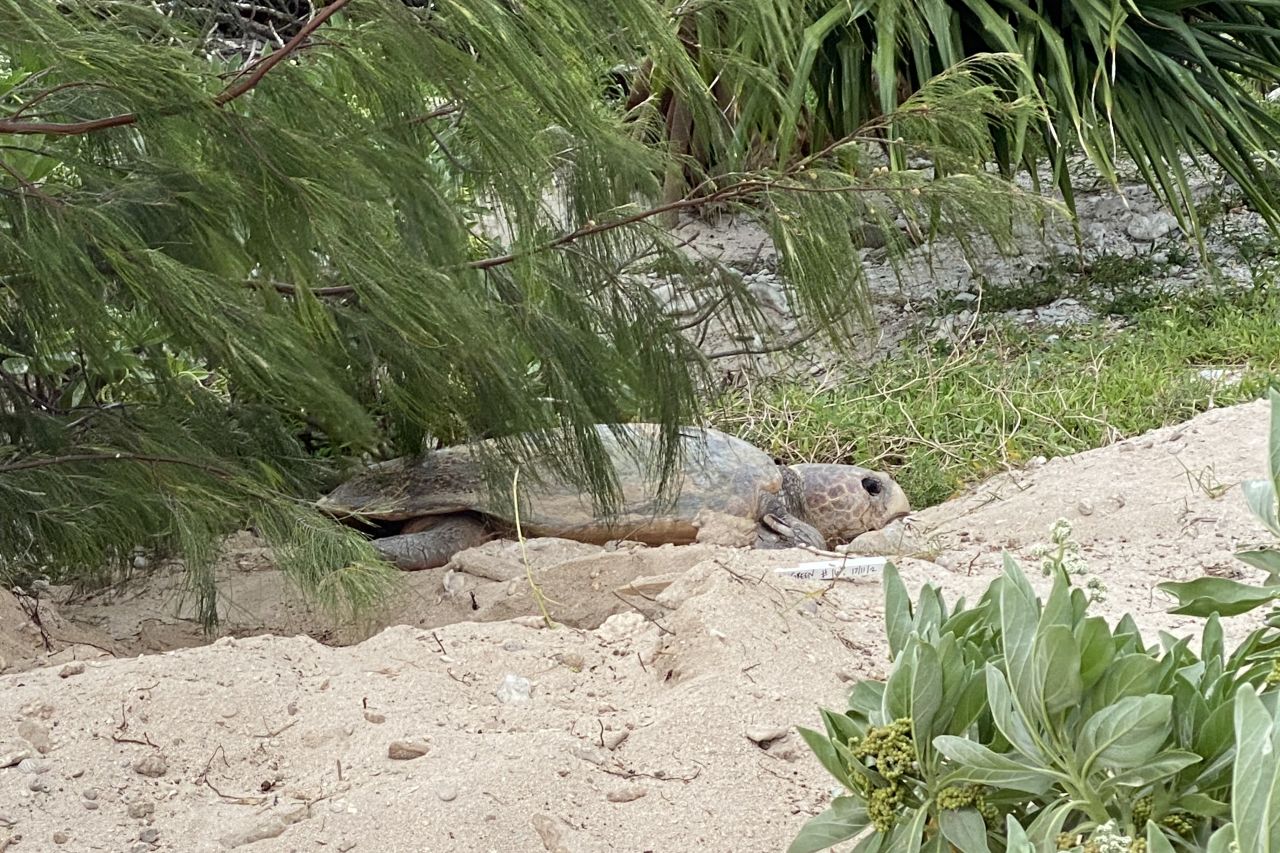
Green and loggerhead turtles like this one lay their eggs on Lady Elliot Island.
Amy graduated from the University of Queensland in 2014 with a degree in Tourism and Hotel Management and hasn’t looked back since.
She’s dedicated to continuing the conservation legacy of her father Peter and previous leaseholders who have worked tirelessly to restore the island, which was left as bare rock for decades after guano mining destroyed the native vegetation. The revegetation program on the island focuses on removing weeds and planting native coral cay species, with more than 10,000 trees, plants and grasses planted so far.
As well as her work on the island, Amy is committed to sharing the story of Lady Elliot Island’s regeneration with wider audiences, regularly making media appearances and participating in panel discussions and speaking engagements on sustainable tourism. In 2022, she was honoured at the Queensland Tourism Awards with the Young Achiever Award for her outstanding contribution to the tourism industry.
“I will continue the work of my family and our team that has made Lady Elliot Island Eco Resort the success it is today. As a team we will continue our sustainability journey, furthering our investment in renewable energy including solar power, battery storage and, in the future, wind generation.
“Our revegetation program will continue to progress in bringing the island back to its natural state. We hope to plant another 10,000 trees over the next few years in partnership with the Great Barrier Reef Foundation. We also hope to continue working closely with research groups and scientists who can help us better understand Reef health to ensure we are protecting this patch of paradise for future generations.”
